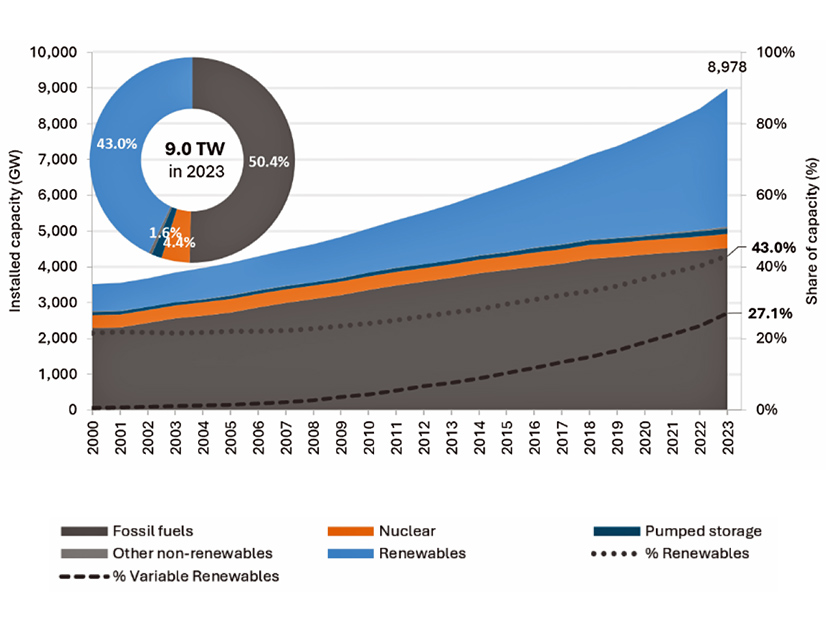MISO’s Independent Market Monitor debuted six new market recommendations this year as part of his annual State of the Market report, released last month.
Two of the recommendations this year stem from MISO’s ongoing struggle with expensive transmission congestion. Independent Market Monitor David Patton said the RTO’s congestion management would improve if it could decommit resources that were committed in the day-ahead market.
Addressing the MISO Board of Directors’ Markets Committee in a July 11 teleconference, Patton said the RTO doesn’t have a process to ask day-ahead committed resources to stand down, even when they contribute to “severe congestion.” MISO could likely save several million dollars in congestion costs annually if it had a process for requesting resources to abandon their day-ahead obligations, he said.
MISO should further develop procedures outlining when it’s appropriate for its operators to derate transmission constraints to manage congestion, Patton recommended. Operators have inconsistently applied deratings, and those out-of-market actions have produced an average of $200 million in congestion costs for the past two years. He said MISO doesn’t have a “clear procedure” that indicates when its operators should implement deratings.
“While it’s important to derate transmission, we should only derate the transmission when it’s necessary,” Patton said.
Outage Details
Beyond that, Patton recommended that MISO compel generation owners to fill out the reasons behind outages or outage extensions in the ticketing system the RTO uses to track scheduling.
Patton said MISO should be requiring “clear reasons” behind outages and extensions. He said better explanations will help its understanding of the nature of outages.
“In a lot of cases, the reason for the outage is unclear or left blank,” Patton told the board.
Patton said descriptions have become more important because now outages can count against resources’ capacity accreditation. “Accurate outage reporting informs operations — and monitoring — in the short run and is critical for capacity accreditation in the long run.”
Patton: More Sloped Curves
On the capacity auction front, Patton recommended that MISO use demand curves at the zonal level to better model demand in its local resource zones and produce more accurate local clearing requirements.
Patton said he was puzzled that MISO didn’t develop a plan for zonal-level curves alongside its successful bid with FERC to use sloped demand curves in the auction at the subregional and footprint-wide level. (See FERC Approves Sloped Demand Curve in MISO Capacity Market.)
Without the use of zonal curves, zones that bind on either their export or import limits in the capacity auction could experience clearing prices that have little to do with reliability value, he said.
Patton said the capacity auction this year cleared “inefficiently high shortage pricing” in Missouri’s Zone 5, which hit $720/MW-day in spring and fall. Missouri’s expected unserved energy from the shortage isn’t as risky as the clearing prices suggest, he argued.
Nevertheless, Patton called it an “amazing step in the right direction that we now have” sloped demand curves to value capacity.
Market Recommendations
Patton said MISO could improve market performance if it aligned its definition of aggregate pricing nodes between its financial transmission rights market and real-time and day-ahead markets.
Currently, the aggregate pricing hubs in the FTR market change with new load. On the day-ahead and real-time markets side, load additions do not influence the aggregation of pricing nodes. Patton said MISO’s influx of large, uneven loads has caused aggregate pricing nodes in the FTR market and day-ahead and real-time markets to vary “substantially.” He recommended that MISO eliminate discrepancies in aggregation definitions between the markets.
“You would like these aggregation zones to be identical. But in a number of cases, they’re not,” Patton said.
Multiplying data centers and cryptocurrency mining facilities will exacerbate the problem, he added. Patton called his recommendation “complicated but fairly important.”
MISO should begin looking into studying loads like it does interconnecting generators in the queue, Patton said, because large loads can also affect the transmission system and necessitate upgrades.
“Some of these large loads create comparable problems to generation that’s interconnecting,” he said.
Patton also said this year he revived an old recommendation to enforce requirements for MISO’s 30-minute reserve products. He explained that MISO often commits resources outside of the market to solve voltage and local reliability issues in load pockets. He said in some cases, shortages that weren’t priced have occurred in load pockets.
Those situations would be best handled by allowing the market to naturally summon short-term reserves to maintain reliability, he said. The problem is most pronounced in East Texas, where MISO has come close to shedding load. Patton said that if MISO honored a requirement to use reserves instead of out-of-market actions, generation owners might be motivated to build more generation or delay retirements.
MISO is reviewing the Monitor’s recommendations and will deliver a public reaction to the State of the Market report in October.
At the end of the Markets Committee teleconference, Clean Grid Alliance’s David Sapper criticized MISO’s timeline for reviewing the State of the Market report for not setting aside enough time for stakeholders to discuss the merits of the Monitor’s recommendations.
Sapper said stakeholders have only minimal time at a single Market Subcommittee meeting to react to the recommendations and aren’t allowed in on the process of MISO determining which recommendations should be taken up and which can be disregarded or delayed.

